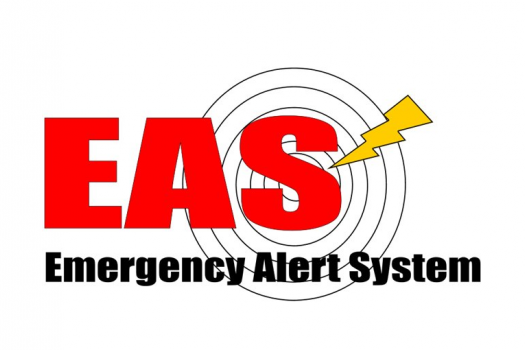FCC Proposes Improvements to Emergency Alert System Messages
The Commission has passed a Notice of Proposed Rulemaking that would improve the clarity and accessibility of EAS messages and launched an inquiry into further improvements

WASHINGTON, D.C.—The Federal Communications Commission has adopted a Notice of Proposed Rulemaking that would improve the clarity and accessibility of visual Emergency Alert System messages to the public, particularly to people who are deaf or hard of hearing.
In addition, the FCC has adopted a Notice of Inquiry and has launched an examination of broader measures to enhance the system’s overall functionality and accessibility.
In the Notice of Proposed Rulemaking adopted on December 14, the Commission proposed rule changes to improve the clarity and descriptiveness of the visual message that appears on television during nationwide Emergency Alert System tests in order to better inform members of the public who are unable to access the test’s audio message.
The FCC also proposed to require broadcasters, cable systems, and other Emergency Alert System participants to check for and use, when available, the internet-based version of alerts, which offer superior visuals, rather than the legacy “over-the-air” version when transmitting alerts to the public.
In a Notice of Inquiry adopted on December 14, the Commission is seeking comment on whether the legacy Emergency Alert System architecture can be modified, augmented, or redesigned to enable government alert originators to relay more visual information as part of, or in parallel with, their alert message.
The Commission is also seeking comments on ways to improve the legacy Emergency Alert System architecture to enable more functionality within the system as a whole.
In a statement on the need to improve the accessibility of the EAS system Chairwoman Jessica Rosenworcel noted that “late last week, a tornado tore through Arkansas, Illinois, Kentucky, Mississippi, Missouri, and Tennessee,” providing “a stark reminder of just what devastating weather can do.”
The professional video industry's #1 source for news, trends and product and tech information. Sign up below.
“It is hard to know what kind of warning is adequate when freak weather like this comes along,” she admitted. “But we do know that we are seeing these kinds of storms with greater frequency. And I think we have a responsibility to improve the warning systems we have, to get people the news they need in an emergency.”
One problem with the existing system, she highlighted, was that when EAS alerts are displayed on the TV screen, “they have both an audio component and a visual component. In other words, they feature both a recorded message and a text crawl. But because of the legacy television architecture of EAS, the audio component may not always match the visual text. This can mean that in some circumstances, less information may be conveyed to either those individuals who have access only to the visual component or to those who have access only to the audio component,” which “can cause real confusion” and create problems for people with disabilities.
To improve the system, Rosenworcel noted that “we propose to improve the script for visual text during nationwide tests of the legacy system” and make “changes to our rules that would bring similar clarity to nationwide tests using the newer, internet-based common alerting protocol, or CAP. Then, because there is greater ability to include enhanced text with CAP alerts, we propose to require broadcasters to check to see if a CAP version of an alert is available when they receive an emergency alert over the legacy system. Finally, we ask what additional steps can be taken to rethink the architecture of EAS and improve the functionality of the system as a whole.”
As part of the inquiry into improving EAS, she stressed that “we're looking for all the good ideas here, both big and small, because we know first-hand they can make a difference. In fact, the agency’s Public Safety and Homeland Security Bureau has been in close contact with FEMA, state and local emergency managers, carriers, and broadcasters in the states the tornado visited last week. We know that improving outreach is vital and that keeping our alerting practices up-to-date is essential—and that is what we seek to do here.”
George Winslow is the senior content producer for TV Tech. He has written about the television, media and technology industries for nearly 30 years for such publications as Broadcasting & Cable, Multichannel News and TV Tech. Over the years, he has edited a number of magazines, including Multichannel News International and World Screen, and moderated panels at such major industry events as NAB and MIP TV. He has published two books and dozens of encyclopedia articles on such subjects as the media, New York City history and economics.

